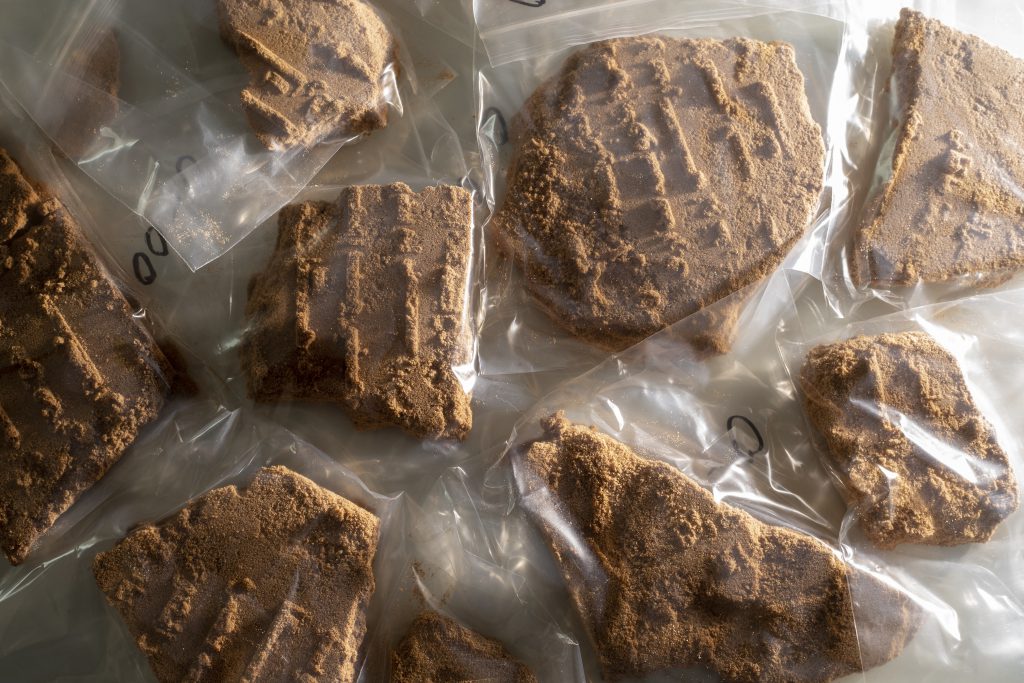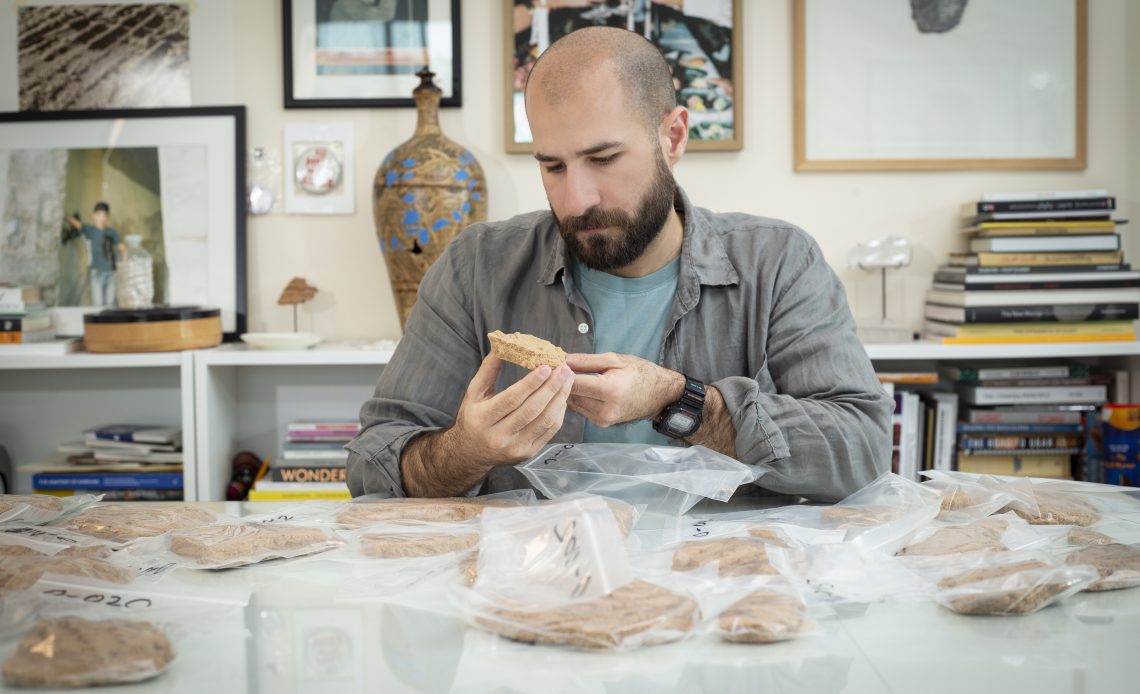In a region characterised by rapid transformation, the themes of memory, loss and preservation run through the work of Nasser Alzayani, winner of the first Richard Mille Art Prize.
Many Bahrainis have memories of the springs at Ain Adhari, a beloved holiday destination where generations of families swam in the crisp pools that dotted Bahrain’s otherwise arid landscape. Over the last 20 years, the springs have been drained by over-irrigation and today are dried up. A redevelopment including an artificial swimming pool and amusement park marks where the springs once were.
Family photos and folk songs about Ain Adhari overflow in the nation’s collective memory. Older Bahrainis remember when Welsh singer Shirley Bassey performed there after arriving on the inaugural Concorde flight from London to Bahrain in 1976. But there is no record of Nasser Alzayani visiting as a child. “There aren’t any photos of me there, and my parents don’t remember. But when I went back as an adult, I was so convinced that I had been there before,” he says, still unable to recall the precise images.
Alzayani began the project back in 2016 by interviewing local people and uncovering songs, poems and visual material that were to become incorporated in the installation. In addition to memory, preservation and the concept of the archive are foundational in Alzayani’s research-heavy practice – and he likes a challenge. “I’m usually looking into stories that have very limited resources available,” he explains. “There are many, many photographs of Ain Adhari, but I couldn’t find any documentation of people’s actual memories in relation to the place.” His curiosity is not for the sake of it. Rather, works such as Watering the distant edge toward the missionary in character. “It felt like if my memories of that place were fading, then that must be the case for everyone else, and it became really important to document it.”

The poem Adhari mourns the disappearance of the springs after years of water being diverted to the estates of the wealthy. “Adhari, how long will you water those distant palms,” writes contemporary Bahraini poet Ali Abdulla Khalifa, grappling with historic struggles for resources and the wealth and power that always win. Watering the distant, deserting the near takes its name from the poem. Alzayani acknowledges injustice whenever it is a part of the stories he uncovers, but what lies at the heart of this work is what people were left with after the springs ran dry, both physically and in an immaterial sense, and the record, or lack of one, that remains. “The poet talks in one of the lines about how, as a result of the spring drying up, our eyes began to water like the spring once did,” Alzayani says, the power of the words apparent in his voice.
The words are stencilled onto tablets made of sand, which are presented in various states of deterioration. An obvious but no less potent metaphor for the tragic relationship between time and memory, the tablets are emblems of loss resembling the archaeological totems found in museums like the Louvre Abu Dhabi. Presented here without the typical protection of a plexiglass case, the tablets are not sanctified by preservation against the ravages of time. Instead, the loss can be experienced directly, as the sand crumbles in real time. Originally, Alzayani cast the tablets in glass to create an imprint, a ghost, of a landscape that no longer exists. This makes sense in the context of his MFA in glass at the Rhode Island School of Design, but the aspects of the school’s programme that encouraged interdisciplinarity impacted Alzayani deeply. In the end, his thesis work was a publishing project, and his work since then has taken advantage of many media.
Ope, there goes gravity, a commission for Warehouse421 in 2021, incorporated shards of planter pots with short texts broaching the subject of gentrification in the Port Zayed area of Abu Dhabi, the city where Alzayani is now based. Two high-rise towers that had lain unfinished for nearly a decade were destroyed in 2020 to make way for a redevelopment project. The demolition risked damaging the large adjacent plant market, a longstanding neighbourhood fixture cherished across several generations.
In the event, there was little actual damage and the plant market soon reopened, but before it did the artist retrieved several ceramic pots shattered by the controlled blast that brought down the towers. In his studio, he reassembled the pots using blue painter’s tape in an installation documenting an unexpected impact of the operations of the real estate industry. The act of preserving artifacts from the plant market was a gesture toward the often-overlooked role that demolition plays in urban development. Text on accession tags attached to the pots described the demolition and its context.
Text-based work has become a vital part of Alzayani’s practice of uncovering histories that are outside the usual narratives, particularly in the region where he grew up. His mother is American, but he was raised entirely in Bahrain. “We learned what was in textbooks,” he recalls of his childhood, “but I never had a true perspective of history until later, when I became exposed to everything that was untold.”
For an upcoming group exhibition, also to be held at Warehouse421, Alzayani will create written documentation of his experience researching the life and the diary of a British advisor to the Emir during Bahrain’s colonial period. The piece is centred around the oleander, a plant introduced by the British and which is now widespread in Bahrain. Known colloquially as the “advisor’s flower”, it features prominently in the journal left by the advisor, an avid gardener. The oleander is a relic of colonialism and also highly poisonous, two qualities that offer the potential to bring new perspectives to an established narrative. In both text and Alzayani’s photography, the project will be a dual journalling experience, consisting of the artist’s own diary entries and photography in response to a simultaneous reading of the advisor’s original journal.
Alzayani seems as much a social scientist, working to contribute to the field, as he is an artist. “I see the work that I’m making as a way of adding to the resources available,” he offers, “to be able to leave written documentation for whoever else is interested in working with the same subject or the same place or the same person.”
Much of his work presents the archive as a more reliable form of memory. When we investigate a history, or we question the way we see a history or the way it has been recorded, “we can fill in those gaps where there’s no record,” he suggests. But first, perhaps, we must challenge ourselves as Alzayani has with Watering the distant, to stand in a place we think we know and try to remember if we have ever really been there.
This profile first appeared in Canvas 103: Down and Dirty – Art Meets Land



